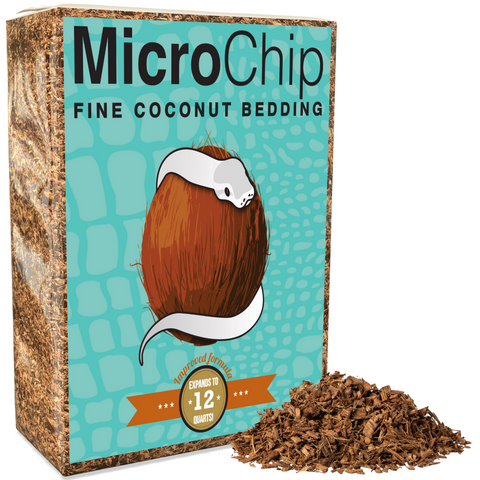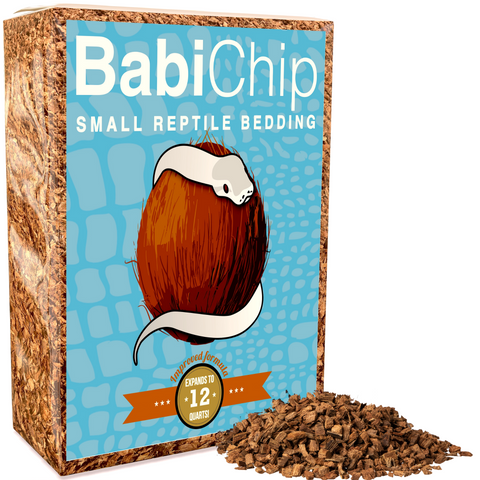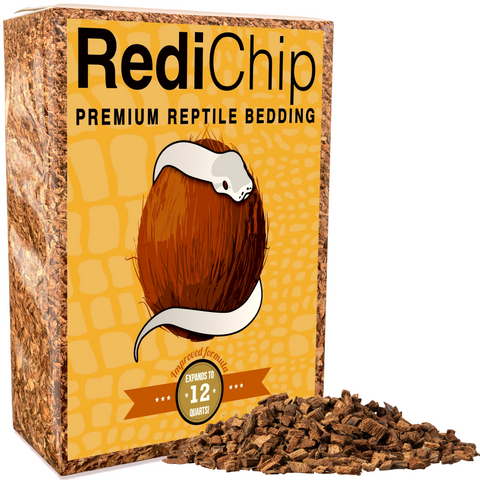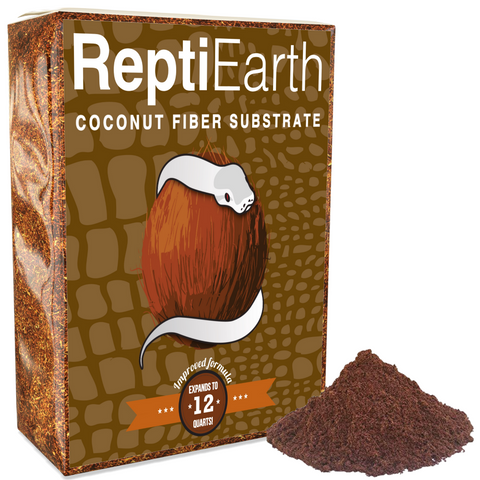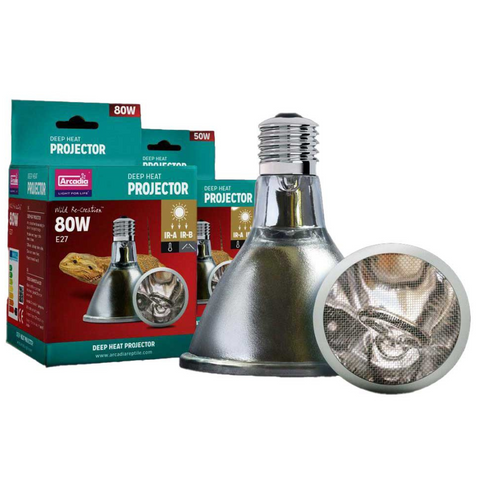Texas Ratsnake
Pantherophis obsoletus lindheimeri
Natural History
The Texas ratsnake is a non-venomous constrictor native to the central and southeastern United States, with its range primarily within the state of Texas, but extending into Louisiana, Arkansas and Oklahoma. As an adaptable species, it thrives in a variety of habitats, including forests, grasslands, agricultural fields, and suburban environments. This snake plays a crucial role in local ecosystems by regulating populations of small vertebrates, particularly rodents and birds. Its ability to thrive in human-altered landscapes allows it to persist even in areas where other reptile species may struggle.
The life cycle of a Texas ratsnake begins when females lay clutches of 5 to 20 eggs, typically in rotting logs, leaf litter, or abandoned burrows, where decomposition provides warmth for incubation. The eggs hatch after approximately 60 to 75 days, depending on temperature and humidity conditions. Hatchlings, which measure about 12 to 16 inches in length, emerge fully independent and ready to hunt. During their first few years, they experience rapid growth, shedding frequently as they outgrow their skin. Juveniles have a more boldly patterned appearance with dark blotches on a lighter background, which helps them blend into their environment. As they mature, their coloration often darkens, with many individuals developing a yellowish or grayish tone with faint patterning. In the wild, they typically reach adulthood within two to four years and can live up to 15 to 20 years, though lifespans are often shorter due to predation and environmental factors.
Texas ratsnakes are highly active and agile hunters, relying on both constriction and powerful jaw strength to subdue prey. As opportunistic feeders, they consume a diverse diet that includes rodents, birds, eggs, lizards, and even other snakes. They are adept climbers, frequently scaling trees and structures to raid bird nests or gain access to sheltered environments. Unlike some other constrictors, they are not strictly ambush predators; they often actively track down prey using a combination of visual cues and their highly developed sense of smell, facilitated by the Jacobson’s organ. These snakes are primarily diurnal in cooler seasons, but they adopt more crepuscular or nocturnal activity patterns during the hotter summer months to avoid excessive temperatures. When threatened, they exhibit defensive behaviors such as puffing up, vibrating their tails against leaves to mimic a rattlesnake, and striking if cornered. However, they rely more on evasion than confrontation when given the opportunity.
Ecologically, Texas ratsnakes serve as essential population regulators, keeping rodent numbers in check and preventing agricultural damage caused by overpopulated pest species. Their predation on bird eggs and hatchlings also influences avian population dynamics, creating a natural balance within ecosystems. Conversely, they fall prey to larger predators, including hawks, owls, foxes, and even other snakes such as larger colubrids and venomous pit vipers. Their ability to adapt to human-modified environments has both benefits and drawbacks; while they help control pests in agricultural and suburban areas, they are also at risk of fatal encounters with vehicles and misguided human persecution. Their resilience is partly due to their flexible diet and behavioral adaptability, allowing them to thrive in a wide range of conditions. This adaptability, combined with their ecological role, makes them a vital component of the ecosystems they inhabit.
Conservation Status
As a subspecies, the Texas rat snake has not been given its own separate conservation status, but according to the IUCN Red List, the entire western rat snake group is considered to be a species of least concern.This designation indicates that the species maintains a stable population and is not presently at significant risk of extinction. As a widespread and adaptable species, it inhabits a broad range that includes much of Texas, portions of Louisiana, Oklahoma, and Arkansas. Unlike many other reptile species facing population declines, this snake benefits from its ability to thrive in diverse environments, including forests, grasslands, agricultural areas, and even suburban settings. While localized declines have been noted in some areas due to habitat fragmentation and human activity, the species as a whole remains abundant and ecologically resilient.
Despite its Least Concern status, the Texas ratsnake faces several threats in the wild. Habitat destruction is a key concern, particularly as urbanization and agricultural development encroach upon natural ecosystems. The clearing of forests and grasslands removes essential shelter and hunting grounds, making it more difficult for individuals to find suitable places to live and reproduce. Road mortality is another significant factor, as these snakes frequently cross roads in search of food or mates, leading to high numbers of fatalities. Additionally, human persecution plays a role in local population declines. Due to their large size and defensive behavior, including hissing and striking when cornered, Texas ratsnakes are often mistaken for venomous species and killed unnecessarily. While they are nonvenomous and play a vital role in controlling rodent populations, misconceptions and fear contribute to unnecessary conflicts with humans.
Conservation efforts for the Texas ratsnake primarily focus on habitat preservation and public education. While it is not the target of large-scale conservation programs, its presence benefits from broader initiatives aimed at protecting reptile biodiversity in the region. State and federal regulations provide some level of protection in certain habitats, particularly in wildlife refuges and conservation areas. Educating the public about the ecological importance of this species can reduce unnecessary killings and promote coexistence. In addition, captive breeding programs exist primarily for the pet trade, though they do not currently play a role in wild population support. However, these breeding programs help to reduce pressure on wild populations by meeting demand for these snakes in captivity. By maintaining healthy ecosystems and fostering awareness about their ecological role, continued efforts can ensure that Texas ratsnake populations remain stable in the long term.
Native Range
The species is native to the south-central United States, with a distribution primarily within the state of Texas, but extending into Louisiana, Arkansas and Oklahoma. Within this range, it occupies a variety of ecological zones, demonstrating a high degree of adaptability. While most common in Texas, where it is found statewide except for the arid far west, its presence in surrounding states follows a similar pattern, favoring regions with ample tree cover and access to prey. The species' range is considered moderately broad, as it is widespread within its core distribution but absent from extreme environments such as true deserts or high-altitude regions.
This snake thrives in temperate and subtropical ecosystems, primarily frequenting forests, woodlands, grasslands, and riparian corridors. It is particularly common in mixed hardwood and pine forests, as well as swampy lowlands and agricultural regions where rodent populations are abundant. Within these macrohabitats, it prefers microhabitats that provide both shelter and hunting opportunities. It is frequently found in hollow logs, beneath leaf litter, inside rodent burrows, and within the crevices of rock outcroppings. Additionally, it is an adept climber, often taking refuge in tree cavities and even human-made structures such as barns and abandoned buildings.
Climatically, this species experiences a range of environmental conditions, adapting well to seasonal variations. In the warmer months, daytime temperatures typically range between 80°F and 95°F, though the snake may become nocturnal or crepuscular to avoid excessive heat. In cooler seasons, it can tolerate temperatures dropping into the 40s°F, and it enters a state of brumation during the winter, often seeking refuge in underground burrows or beneath logs to escape the cold. Humidity levels vary depending on the local environment, with individuals in forested and riparian areas experiencing consistently higher moisture levels than those in open grasslands or agricultural zones. Precipitation patterns also impact their behavior, as they tend to be more active during periods of moderate rainfall but remain sheltered during heavy storms.
The species' elevation range extends from sea level up to approximately 2,500 feet. It predominantly occupies lowland and mid-elevation regions, avoiding extreme altitudes where temperature fluctuations are more pronounced and prey availability may be limited. Proximity to water sources such as streams, rivers, and ponds is a common factor in preferred habitats, as these areas support higher biodiversity and increased prey abundance. Vegetation plays a crucial role in providing shelter and hunting opportunities, with dense undergrowth, fallen logs, and tree hollows being particularly important for survival. While it is highly adaptable to human-altered landscapes, it still requires suitable cover and prey availability to thrive.
Key environmental factors influencing its distribution include the presence of a stable food supply, access to suitable shelter for thermoregulation and predator avoidance, and a climate that allows for seasonal activity patterns. While capable of tolerating a range of habitats, it is most frequently found in areas where these factors align, making forests, riparian zones, and agricultural edges its primary strongholds. Understanding these natural habitat preferences is essential for replicating suitable captive conditions and ensuring the well-being of individuals maintained in human care.
Behavior
The Texas ratsnake is a primarily diurnal species, though it may exhibit crepuscular or even nocturnal activity during particularly hot periods, especially in the peak of summer. In its native range, it is most active in spring and early summer when temperatures are warm but not extreme. Seasonal variations in activity are noticeable, with a marked increase in movement during the breeding season, typically from late spring to early summer. During this time, males actively search for females, often leading to inter-male competition. As temperatures drop in late fall and winter, this species enters a state of brumation, seeking shelter in underground burrows, rock crevices, or human-made structures to conserve energy until warmer conditions return.
This species is largely solitary, interacting with conspecifics primarily during mating season or when competing for limited resources such as shelter or basking sites. They are not territorial in the strictest sense but may show defensive posturing or mild aggression toward one another in confined spaces. During breeding, males may engage in combat, intertwining their bodies and attempting to push one another to the ground to establish dominance. Once mating occurs, females take no part in parental care; eggs are deposited in decaying vegetation, loose soil, or rotting logs, where they incubate unattended until hatching approximately two months later.
As an ectotherm, the Texas ratsnake is highly responsive to environmental stimuli, particularly temperature and humidity fluctuations. It actively seeks warm basking areas in cooler weather and shifts to shaded or subterranean spaces when temperatures become excessive. High humidity can trigger increased activity, whereas prolonged dryness may encourage more time spent in burrows or concealed areas. This species relies heavily on chemical cues, using its forked tongue and Jacobson’s organ to detect prey, predators, and even potential mates. It also possesses keen eyesight for detecting movement, particularly when hunting rodents, birds, or lizards. In response to predators, it may employ defensive behaviors such as rapid escape, musking, tail vibration that mimics a rattlesnake’s warning, or biting if cornered.
A notable behavioral adaptation of this species is its climbing ability, which exceeds that of many other colubrids. Equipped with strong musculature and keeled ventral scales, it is an adept climber, frequently ascending trees, rock faces, or even the sides of buildings in search of prey or refuge. It is also known for its bold disposition; unlike some other nonvenomous snakes that rely heavily on crypsis, this species often stands its ground when confronted. While not inherently aggressive, it is more likely than some related species to strike in self-defense, particularly when it feels directly threatened.
In captivity, some aspects of its behavior change due to the controlled environment. Food availability tends to make captive individuals less motivated to pursue prey with the same intensity as their wild counterparts, though live feeding can elicit more natural predatory responses. Additionally, captivity often reduces stressors like predators and competition, making captive individuals less flighty over time if acclimated properly. However, under-stimulating environments can lead to signs of stress, including excessive pacing, striking at perceived threats, or prolonged burrowing. Providing climbing structures, hiding spots, and varied enrichment such as novel scents or different feeding techniques helps promote natural behaviors and overall well-being.
Captivity Requirements
Enclosure Design
A properly designed enclosure is essential for maintaining the health and well-being of this species. For a juvenile, a secure enclosure measuring at least 20 gallons is sufficient, but as they grow, they will require significantly more space. Adult individuals can reach lengths of 4 to 6 feet, necessitating a minimum enclosure size of 4 feet in length, 2 feet in width, and 2 feet in height. A larger enclosure is always beneficial, especially for particularly active specimens.
Enclosure materials should be chosen based on durability and insulation properties. Glass terrariums work well for displaying the snake, but a PVC or wood enclosure with proper sealing will offer better heat retention. Adequate ventilation is essential to prevent stagnant air and respiratory issues; this can be provided through strategically placed ventilation panels. Since this species is an excellent climber, tall enclosures with secure screen tops or front-opening doors with locking mechanisms are recommended. Strong latches should be installed on all openings, as they have a reputation for being escape artists.
The interior should closely mimic their natural environment, incorporating numerous climbing structures such as sturdy branches, cork bark tubes, and artificial or live plants. Hides should be strategically placed throughout the enclosure—at least one on the warm side and one on the cool side—to ensure the snake has access to secure retreats at different temperatures. A basking area should be positioned on one side of the enclosure to create a proper thermal gradient, allowing the snake to regulate its body temperature. Since this species naturally inhabits areas with trees, shrubs, and ground cover, climbing space is highly beneficial. Providing enrichment such as textured surfaces, tunnels, and varying substrate depths can encourage natural behaviors.
Lighting and Heating
A proper thermal gradient must be established to support this species’ metabolic functions, digestion, and overall activity levels. A basking area should be maintained at approximately 85–90°F, while the ambient temperature throughout the enclosure should range between 75–82°F. At night, temperatures can drop safely to 70°F, but should not go lower than 65°F, as prolonged exposure to cooler temperatures can lead to health problems. Heat should be provided using overhead heating elements, such as a ceramic heat emitter or a radiant heat panel, rather than under-tank heating pads, as this species prefers to bask off the ground.
UVB lighting is not an absolute requirement for survival, but it is highly recommended, as it can enhance overall health, promote natural behaviors, and aid calcium metabolism. A linear 5–7% UVB lamp should be installed, covering approximately half of the enclosure length. The lamp should be positioned within the appropriate distance to ensure effective UVB exposure, typically around 10–15 inches above a basking platform. A photoperiod of 10–12 hours of light per day should be maintained, with seasonal adjustments to mimic natural cycles. During winter, slightly reducing the light cycle can help replicate seasonal changes, which may influence breeding behaviors in some individuals.
Substrate and Enrichment
This species thrives on substrates that provide both comfort and the ability to burrow while retaining an appropriate level of humidity. Substrate options such as ReptiChip allow for burrowing while reducing the risk of impaction. Adding a blend with ReptiEarthcan help maintain moderate moisture levels. Cedar and pine shavings should be avoided, as the aromatic oils in these woods can cause respiratory irritation and long-term health complications.
Enrichment plays a crucial role in maintaining a healthy and mentally stimulated snake. Given their natural tendency to climb and explore, the enclosure should feature a variety of branches, bark slabs, and perches at different heights. Hides should be snug-fitting and placed on both the warm and cool ends of the enclosure, as secure retreats reduce stress. Tubes, hollow logs, and artificial rock structures can also encourage exploratory behavior. Seasonal environmental changes, such as temporarily adding fresh leaf litter or rearranging enclosure elements, can stimulate natural curiosity and increase activity levels.
Humidity and Hydration
Maintaining appropriate humidity levels is essential for proper shedding and hydration. This species thrives in a humidity range of 40–60%, though slightly higher levels may be necessary during shedding cycles. A well-balanced humidity gradient can be achieved by lightly misting the enclosure every few days while ensuring that excessive moisture does not lead to bacterial growth or respiratory issues. Using a large water dish near the heat source can also increase ambient humidity while providing a hydration source.
Hydration strategies should accommodate the snake’s natural drinking habits. A sturdy and easily accessible water dish should be provided at all times, with fresh water changed regularly to prevent contamination. Some individuals may also drink water droplets from misted enclosure surfaces, particularly during shedding cycles. Ensuring that the humidity does not drop too low is critical, as improper hydration can result in incomplete sheds and dehydration-related health issues. Using an accurate digital hygrometer to monitor humidity levels is recommended, as fluctuations can impact the snake’s overall well-being.
By maintaining an enclosure that meets their environmental and physiological needs, keepers can ensure this snake remains healthy, active, and stress-free in captivity. When housed under optimal conditions, they are hardy and rewarding reptiles that thrive with proper care.
Diet & Supplementation
In its natural habitat, this species is a non-venomous constrictor with a diet primarily consisting of small rodents, birds, and their eggs. It is a carnivorous reptile that opportunistically preys on a variety of animals depending on availability. Juveniles tend to consume smaller prey, such as lizards, frogs, and large invertebrates, before transitioning to a diet dominated by warm-blooded prey as they mature. Rodents, including mice and young rats, make up a significant portion of the diet for adults, though they will also climb trees and raid bird nests for eggs and nestlings. Their ability to thrive in both forested and urban environments means they can frequently be found hunting in barns, abandoned buildings, and even residential areas where rodents are abundant.
This species primarily employs an ambush-based hunting strategy, although it is also an active forager when necessary. Using a combination of chemical and visual cues, it tracks prey by flicking its tongue to collect scent particles, which are analyzed by the Jacobson’s organ in the roof of the mouth. This keen sense of smell allows it to locate food even in low-visibility conditions. Once prey is detected, it strikes quickly, holding the victim with its curved teeth before wrapping its body around it in a tight coil. Constriction cuts off blood flow to the prey's vital organs, leading to rapid unconsciousness and death. Unlike venomous species, which immobilize prey through envenomation, this species relies entirely on its muscular strength to subdue meals before swallowing them whole. Its climbing ability also aids in hunting arboreal prey such as birds and tree-dwelling rodents, making it one of the more versatile predators in its ecosystem.
Dietary preferences shift with age and environmental conditions. Hatchlings and juveniles eat smaller, more frequent meals, typically every five to seven days, while adults consume larger prey items less frequently, often once every one to two weeks. Seasonal variations in temperature and prey availability also influence feeding behavior. During cooler months, this species may reduce or completely suspend feeding as its metabolism slows in response to lower temperatures. In captivity, this natural fasting period may also be observed, particularly in individuals sensitive to seasonal changes.
When keeping this species in captivity, providing a nutritionally balanced diet that closely mimics its natural prey is essential for overall health. Frozen-thawed rodents, such as mice and rats, are the most suitable staple food source, offering the necessary macronutrients and caloric content. While wild individuals consume a varied diet of mammals, birds, and occasionally reptiles, captive specimens generally thrive on a consistent rodent-based diet. However, occasional variation, such as chicks or quail, can be beneficial in replicating natural feeding patterns. Overfeeding can lead to obesity, a common issue in captivity, so portion control and appropriate feeding schedules must be maintained.
Food refusal can sometimes be a challenge, particularly in newly acquired individuals or during seasonal fasting periods. Stress, improper temperatures, or unsuitable prey size can contribute to feeding issues. To encourage natural feeding behaviors, prey items should be warmed slightly to mimic the body temperature of live prey, and feeding should take place in a secure, low-stress environment. Scenting techniques, such as rubbing prey with feathers or using reptile-safe scent additives, may help entice reluctant feeders. Enrichment strategies, including offering prey on tongs or allowing the snake to actively locate hidden food, can promote natural hunting instincts and improve feeding responses. By maintaining an appropriate diet and addressing common feeding challenges, keepers can ensure the long-term health and well-being of this species in captivity.
Reproduction
Texas ratsnakes reach reproductive maturity between three and five years of age, depending on factors such as diet, growth rate, and overall health. Sexual dimorphism is not pronounced in this species, though males may grow slightly longer and exhibit broader heads compared to females. During the breeding season, which typically coincides with warmer months in their natural range, males become more active in searching for receptive females. Courtship involves tactile stimulation, where the male will align his body with the females’ and use rhythmic body movements and gentle nudging to encourage copulation. If the female is receptive, she will allow the male to intertwine and copulation can last from several minutes to an hour. Some aggression may be observed if the female is not receptive or is stressed.
Environmental factors play a crucial role in triggering reproductive behavior in captivity. Seasonal temperature cycling is one of the most important cues, as wild populations experience cooler winter months followed by a warm-up in spring. To replicate this in captivity, it is recommended to brumate adult snakes for six to ten weeks at temperatures between 50 and 60°F, with reduced light exposure and minimal feeding. After this cooling period, gradually raising temperatures back to their normal range and increasing the photoperiod stimulates hormonal changes that encourage breeding behaviors. Humidity should also be adjusted to match seasonal fluctuations, with a slight increase during the breeding period to mimic spring conditions. Proper hydration is essential, as dehydration can reduce fertility in both males and females.
This species is oviparous, meaning it lays eggs rather than giving birth to live young. Successful breeding requires controlled introductions between compatible individuals, as not all pairings will result in successful copulation. Many breeders prefer to introduce females into the male's enclosure to reduce territorial stress and encourage exploratory courtship. A properly conditioned female should exhibit weight gain and signs of follicular development before pairing to maximize the chances of fertilization. Providing a large enough enclosure ensures that the female does not feel overly stressed, which can lead to rejection or defensive behaviors. Mating pairs should be monitored closely, as excessive stress or aggression can deter breeding attempts.
Challenges in captive breeding of Texas ratsnakes may include mate incompatibility, stress-induced reproductive suppression, and improper environmental conditions. Some females are not receptive to certain males, which can result in failed copulation attempts. Rotating males or providing multiple introduction attempts over a period of days may improve success rates. Stress is another significant factor that can prevent breeding. Ensuring that both individuals are well-fed, have access to proper hiding places, and are not overly disturbed during courtship increases the likelihood of successful reproduction. Environmental conditions must also be closely regulated; failure to provide appropriate seasonal variations, such as brumation, may lead to reduced fertility or lack of breeding interest. By carefully managing these factors, successful captive breeding of Texas ratsnakes is achievable with proper planning and attention to detail.
Incubation & Neonate Care
The Texas ratsnake is an oviparous species, meaning it lays eggs rather than giving birth to live young. After successful mating in the spring or early summer, females typically deposit a clutch of 5 to 20 eggs in a warm, humid, and secluded location such as decaying logs, under rocks, or within loose soil. In captivity, a suitable egg-laying site should be provided, such as a nesting box filled with slightly moist sphagnum moss or vermiculite to maintain proper humidity. Once the eggs are laid, they should be carefully transferred to an artificial incubation setup to optimize survival rates.
Incubation should occur in a controlled environment with temperatures maintained between 78°F and 84°F, with 80°F to 82°F being optimal for uniform development. Temperature fluctuations outside this range can lead to developmental deformities or delayed hatching. Humidity levels should be kept around 80% to prevent the eggs from desiccating, requiring periodic misting of the incubation medium without oversaturating it. A substrate such as perlite or vermiculite mixed with water at a 1:1 or 2:1 ratio by weight (substrate to water) ensures proper moisture retention. The incubation period generally lasts between 55 and 65 days, though cooler temperatures may slightly prolong development. Like many colubrid snakes, Texas ratsnakes do not exhibit temperature-dependent sex determination, meaning the sex of the offspring is genetically determined rather than influenced by incubation temperature.
Hatching occurs when the fully developed neonates use their egg tooth to slit open the eggshell, a process known as pipping. Hatchlings may remain inside their eggs for several hours to a couple of days while absorbing the remaining yolk sac before fully emerging. It is crucial not to intervene unless a hatchling is struggling significantly, as premature removal can lead to unabsorbed yolk or health complications. Once all neonates have emerged, they should be transferred to an appropriate rearing enclosure.
Neonate housing should consist of a secure and escape-proof enclosure with minimal furnishings to reduce stress and maximize ease of monitoring. A small, appropriately ventilated plastic tub with a paper towel substrate is ideal during the first few weeks. Providing a few simple hides and a small water dish is essential to maintain security and hydration. Ambient temperatures should be maintained between 75°F and 80°F, with a warm side basking area of approximately 85°F, achieved using an under-tank heat pad regulated by a thermostat. Relative humidity should be kept around 50% to 60%, ensuring proper hydration and aiding in shedding.
Texas ratsnake hatchlings typically have their first shed within 5 to 10 days after hatching. Once they have shed, they should be offered their first meal—appropriately sized pinky mice. Some neonates readily accept food, while others may require scenting techniques or live prey to stimulate feeding response. Meals should be offered every 5 to 7 days, and any uneaten prey should be removed after several hours to prevent stress. Fresh water should always be available, and hydration should be monitored through normal behaviors and body condition.
Neonates are best housed separately to reduce competition, avoid cannibalism risks, and allow for precise monitoring of individual feeding and growth rates. Handling should be minimized initially to reduce stress and allow the young snakes to acclimate to their new surroundings. Over time, brief, gentle handling sessions can encourage docility without overwhelming the animal. Common health concerns at this stage include retained shed, improper feeding response, or dehydration, which can often be remedied by adjusting humidity levels or using techniques such as soaking or offering more secure hiding spaces.
By maintaining optimal incubation conditions, ensuring a stress-free hatching environment, and providing precise neonatal care, keepers can successfully raise healthy Texas ratsnake hatchlings that thrive in captivity.
Conclusion
The Texas ratsnake is a highly adaptable and resilient species, capable of thriving in both natural and human-modified environments. Its role as a predator helps regulate populations of rodents and birds, contributing to ecosystem balance. While it faces threats such as habitat destruction, road mortality, and human persecution, its overall population remains stable, warranting its classification as Least Concern by conservation organizations.
In captivity, this species proves to be a hardy and engaging reptile, displaying a range of fascinating behaviors. Proper care involves providing a spacious and secure enclosure with climbing opportunities, maintaining appropriate temperature and humidity levels, and ensuring a varied and nutritionally sound diet. Captive breeding programs help sustain populations in the pet trade and reduce pressure on wild individuals, promoting responsible reptile keeping. While relatively low-maintenance compared to some other large colubrids, this snake requires a commitment to environmental enrichment, proper handling techniques, and regular health monitoring to ensure longevity and well-being.
Through continued efforts in habitat preservation, public education, and responsible pet ownership, the Texas ratsnake can remain a thriving species both in the wild and in captivity. Its natural adaptability and ecological significance highlight the importance of coexistence and conservation awareness, ensuring that future generations can appreciate this remarkable snake for years to come.



